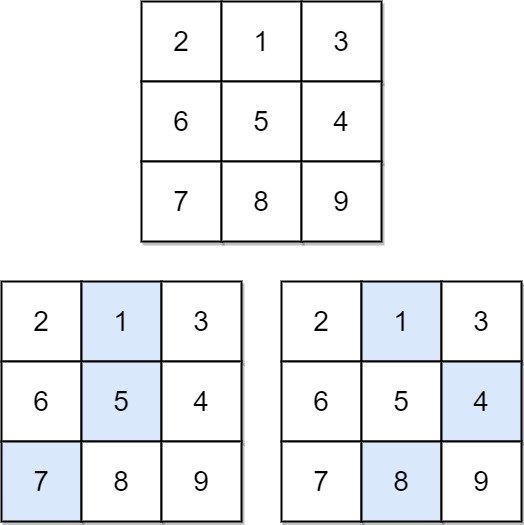Problem
Given an n x n array of integers matrix, return **the *minimum sum* of any falling path through** matrix.
A falling path starts at any element in the first row and chooses the element in the next row that is either directly below or diagonally left/right. Specifically, the next element from position (row, col) will be (row + 1, col - 1), (row + 1, col), or (row + 1, col + 1).
Example 1:

Input: matrix = [[2,1,3],[6,5,4],[7,8,9]]
Output: 13
Explanation: There are two falling paths with a minimum sum as shown.
Example 2:

Input: matrix = [[-19,57],[-40,-5]]
Output: -59
Explanation: The falling path with a minimum sum is shown.
Constraints:
n == matrix.length == matrix[i].length1 <= n <= 100-100 <= matrix[i][j] <= 100
Solution
/**
* @param {number[][]} matrix
* @return {number}
*/
var minFallingPathSum = function(matrix) {
for (var i = 1; i < matrix.length; i++) {
for (var j = 0; j < matrix[i].length; j++) {
matrix[i][j] += Math.min(
j === 0 ? Number.MAX_SAFE_INTEGER : matrix[i - 1][j - 1],
matrix[i - 1][j],
j === matrix[i - 1].length - 1 ? Number.MAX_SAFE_INTEGER : matrix[i - 1][j + 1],
);
}
}
return Math.min(...matrix[matrix.length - 1]);
};
Explain:
nope.
Complexity:
- Time complexity : O(n * m).
- Space complexity : O(n).